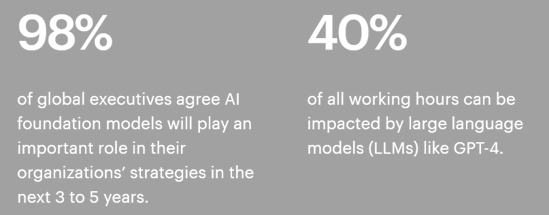Since late 2022, generative AI technology surged, impressing business leaders and investors with its ability to create human-like text and images. OpenAI’s ChatGPT gained an astonishing one million users in just five days, outpacing Apple’s iPhone adoption. Facebook and Netflix took months and years, respectively, to reach the same user base. Domains like finance and language preservation are embracing generative AI’s novel capabilities, enabled by neural networks trained on vast data and using attention mechanisms to understand context and generate original content.

The value chain of GenAI: Six links
As generative AI systems are being created and utilized, a fresh value chain is arising to facilitate the training and utilization of this potent technology. At first glance, it might appear quite akin to the conventional AI value chain. In essence, out of the six main categories—computer hardware, cloud platforms, foundation models, model hubs and machine learning operations (MLOps), applications, and services—only the inclusion of foundation models is novel.


Author
Pramod M
Pramod has an overall experience of around 17 years in Aerospace, IT, Education & Product development. He holds a MBA degree from Leeds University Business School, UK and currently working with solutions & strategy team at GS Lab | GAVS.




